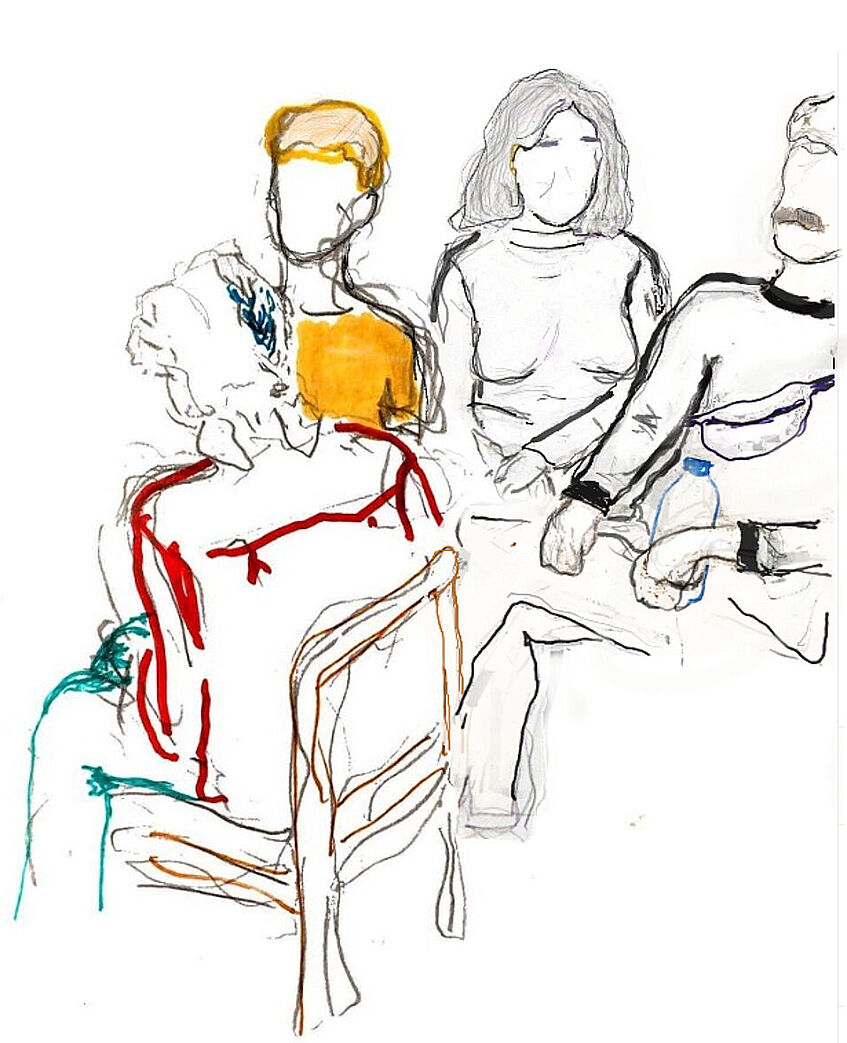Urban Chair Assemblies for Critical Publicity Production: Sitting in Vienna Meidling, Donaustadt, Brigittenau

Funded by the Faculty of Historical and Cultural Studies, University of Vienna
stuhlversammlungen.euroethno@univie.ac.at
Project Lead
Felix Gaillinger, M.A.
Project Team
Isabella Hesse, M.A. | Sebastian Kunig | Katharina Petsch, B.A.
Collaborators at the Wien Museum
Alina Strmljan, M.A. | Dr. Matti Bunzl
Collaborators at dérive, radio for urban research
Lene Benz, M.A. | Sandra Voser, M.A.
Illustrations by
Daria Galkina, B.A.
The aim of the Third Mission project is to create a public and site-specific critical publicity that is composed beyond prominent debate representatives and highly formalized organizational structures through everyday approaches and perspectives on sitting. The project aims to create a mode of exchange about sitting that brings together various unheard and unseen voices of city residents - including from different milieus, age groups, ethnicities, and genders. As cultural sociologist Andreas Reckwitz (2020) has highlighted, those who actively engage in such political debates are often representatives of an urban and liberal middle class. They have already internalized a certain understanding of why and how they should proactively engage in shaping urban spaces. However, as well-known public sphere theorists, such as Jürgen Habermas (1962), Hannah Arendt (1960), or Oskar Negt and Alexander Kluge (1972), have long argued, the public produced in this way is specific, not reflecting a broad spectrum of perspectives but rather nourishing from planning, political, and (socio-)economic interests. Such selective or partial publics operate under the guise of democratic participation but overlook many positions that go beyond bourgeois norms. The format of urban chair assemblies is to be tested in the districts of Donaustadt, Meidling, and Brigittenau, places in Vienna that experience strong external attributions on one hand and are not in the core zone of Vienna, which already receives broad attention in politics, media, and urban planning, on the other. Following ethnographic principles that emphasize the relevance of the contextuality and contextualization of the conversation site, the project team plans to conduct discussions outdoors in the form of urban chair assemblies. While such assemblies have long been established as didactic-pedagogical measures in educational institutions and as therapeutic practices in psychiatric treatment settings, they represent a novelty in public space and regarding the specific participants. Chairs will be set up all day at pivotal and yet to be further defined points, such as (train station) squares in each district.
Planned End Products: Exhibition, journalistic publication (expected special section totaling 8 pages, circulation 16,000-20,000 copies), radio broadcast
